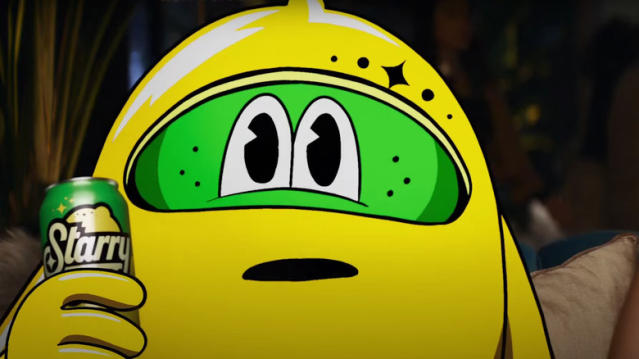
Effective brand communication is the cornerstone of successful marketing campaigns. It enables businesses to connect with their target audience, convey their values and messages, and ultimately drive engagement and loyalty.
One increasingly popular method for achieving this is through commercial animation. Commercial animation, encompassing various forms such as 2D, 3D, and motion graphics, has emerged as a powerful tool for brand communication. Its ability to convey complex ideas in a visually compelling and engaging manner has made it increasingly popular among marketers.
As consumer preferences evolve towards more interactive and visually stimulating content, the significance of commercial animation continues to grow. This blog explores the transformative impact of commercial animation on brand communication strategies.
The Evolution of Brand Communication
Traditional Methods vs. Modern Approaches
In the past, brand communication primarily relied on traditional methods such as print advertising, television commercials, and billboards. These one-way communication channels offered limited interaction with consumers. However, with the advent of digital technology, modern approaches to brand communication have emerged.
These include social media marketing, content marketing, influencer partnerships, and interactive experiences. Unlike traditional methods, modern approaches facilitate two-way communication, allowing brands to engage directly with their audience and receive instant feedback.
Rise of Digital Platforms and Changing Consumer Behavior
The rise of digital platforms, including social media, websites, and mobile apps, has profoundly influenced consumer behavior. Today's consumers are more connected than ever before, spending significant amounts of time online and engaging with brands across multiple touchpoints.
This shift in consumer behavior has forced brands to adapt their communication strategies to meet consumers where they are. Digital platforms offer unprecedented opportunities for brands to reach and engage with their target audience in a personalized and interactive manner.
Importance of Visual Content in Modern Communication Strategies
In today's fast-paced digital landscape, visual content plays a crucial role in communication strategies. Visuals, including images, videos, infographics, and animations, have proven to be highly effective in capturing attention, conveying messages, and evoking emotions.
Research shows that visual content is processed faster and remembered longer than text alone, making it an essential component of modern communication strategies. As a result, brands are increasingly investing in visual content creation to stand out in an overcrowded online space and connect with their audience on a deeper level.
Understanding Commercial Animation
Commercial animation refers to the use of animated content for promotional or advertising purposes by businesses or organizations. It involves the creation of animated videos, graphics, or characters to convey brand messages, promote products or services, and engage with target audiences. The scope of commercial animation encompasses various industries, including advertising, marketing, entertainment, education, and more.
Different Types of Commercial Animation
2D Animation: 2D animation involves creating movement in a two-dimensional space, typically using drawings or digital illustrations. It is one of the oldest forms of animation and is widely used in commercials, explainer videos, cartoons, and advertisements.
3D Animation: 3D animation involves creating digital models and environments in a three-dimensional space, allowing for more depth and realism. It is commonly used in commercials, product visualizations, animated films, and video games.
Motion Graphics: Motion graphics combine animation, typography, and graphic design to create visually engaging sequences. They are often used to convey information, explain concepts, or enhance storytelling in commercials, presentations, and promotional videos.
Stop Motion Animation: Stop motion animation involves capturing individual frames of physical objects or characters in different positions and then sequencing them together to create the illusion of movement. It is used in commercials, music videos, and short films to create unique and stylized visuals.
Examples of Successful Commercial Animations
Coca-Cola's "Happiness Factory": This 3D animated commercial takes viewers on a whimsical journey inside a Coca-Cola vending machine, showcasing the magic and joy of sharing a Coke with friends.
Nike's "The Last Game": This animated short film features famous soccer players transformed into cartoon characters as they embark on a mission to save soccer from an evil scientist. The dynamic animation and engaging storyline captivate audiences while promoting Nike's brand and products.
The Power of Visual Storytelling in Brand Communication
Storytelling plays a pivotal role in brand communication by creating a compelling narrative that resonates with audiences on an emotional level. It humanizes brands, fosters deeper connections with consumers, and helps differentiate them from competitors.
Through storytelling, brands can convey their values, mission, and unique selling propositions in a memorable and engaging way. By tapping into universal themes and experiences, storytelling transcends traditional marketing tactics and leaves a lasting impression on consumers.
How Animation Enhances Storytelling Capabilities
Animation offers unique advantages in storytelling by bringing concepts and characters to life in vibrant and imaginative ways. Unlike live-action footage, animation allows for limitless creativity and flexibility in visualizing complex ideas, abstract concepts, and fantastical worlds.
It enables brands to convey messages with clarity and impact, regardless of language or cultural barriers. Animation's ability to evoke emotions, capture attention, and stimulate the imagination enhances storytelling capabilities and leaves a lasting impression on audiences.

How to Engage Audiences Through Commercial Animation
Impact of Animation on Audience Engagement
Animation has a profound impact on audience engagement by captivating attention, evoking emotions, and fostering deeper connections with viewers. Unlike static imagery or text-based content, animation stimulates multiple senses and offers a dynamic and immersive experience.
Its visual appeal and ability to convey complex ideas in a digestible format make it highly engaging for audiences across demographics. Animated content elicits higher levels of viewer engagement, including longer viewing times, increased shares, and higher conversion rates, making it an effective tool for brands to connect with their target audience.
Psychological Aspects of Animation and Viewer Perception
Animation leverages psychological principles to enhance viewer perception and create memorable experiences. By employing techniques such as motion, color, and character design, animation can influence emotions, attitudes, and behaviors in subtle yet impactful ways.
For example, the use of vibrant colors and fluid movements can evoke positive emotions and convey a sense of energy and excitement, while character animation can evoke empathy and relatability. Additionally, animation allows for the portrayal of abstract concepts and complex narratives in a visually accessible manner, making it easier for viewers to understand and retain information.
Strategies for Creating Engaging Commercial Animations
Storytelling: Craft compelling narratives that resonate with your target audience and evoke emotional responses. Develop relatable characters, meaningful conflicts, and memorable resolutions to keep viewers engaged from start to finish.
Visual Appeal: Pay attention to the visual elements of your animation, including color palette, character design, and animation style. Create visually stunning imagery that captures your attention and reinforces your brand identity.
Interactivity: Incorporate interactive elements such as clickable hotspots, quizzes, or branching storylines to encourage active engagement and participation from viewers.
Sound Design: Use sound effects, music, and voiceovers to enhance the mood and atmosphere of your animation. Sound can evoke emotions, convey information, and create a cohesive audio-visual experience.
Authenticity: Stay true to your brand voice and values throughout the animation. Authenticity builds trust and credibility with your audience, fostering stronger connections and long-term loyalty.
Building Brand Identity with Animation
Animation plays a crucial role in brand identity development by providing a dynamic and visually compelling means of expressing brand values, personality, and essence. Through animation, brands can establish a distinct visual language that sets them apart from competitors and resonates with their target audience.
Animation enables brands to create memorable characters, storytelling elements, and visual motifs that embody the brand's identity and evoke emotional connections with consumers. By consistently incorporating animation marketing and communication strategies, brands can reinforce their identity, foster brand recognition, and cultivate loyalty among customers.
Using Animation to Convey Brand Values and Personality
Animation offers a versatile platform for conveying brand values and personality in a creative and engaging manner. Whether through character animation, visual storytelling, or motion graphics, brands can communicate their core beliefs, mission, and unique selling propositions effectively.
For example, playful and whimsical animations may reflect a brand's lighthearted and approachable personality, while sleek and sophisticated animations may convey a sense of elegance and professionalism. By aligning animation styles, themes, and narratives with their brand attributes, companies can build a cohesive and authentic brand identity that resonates with their target audience.

Overcoming Challenges and Embracing Opportunities
Common Challenges in Creating Commercial Animations:
Creating commercial animations can present various challenges for brands and content creators. Some common challenges include:
Budget Constraints: Limited financial resources may restrict the scope and quality of animation projects, leading to compromises in creativity and production values.
Time Constraints: Tight deadlines and project timelines can hinder the ability to create high-quality animations and may result in rushed or subpar deliverables.
Technical Complexity: Animation production requires specialized skills, software, and equipment, which can pose challenges for brands without in-house expertise or access to professional animators.
Creative Direction: Aligning animation with brand identity, messaging, and objectives while maintaining creative integrity can be challenging, especially when multiple stakeholders are involved in the decision-making process.
Strategies for Overcoming Budget and Resource Constraints:
Despite the challenges, brands can employ various strategies to overcome budget and resource constraints when creating commercial animations:
Prioritize Objectives: Focus on key objectives and messages to ensure that animation resources are allocated effectively and aligned with business goals.
Optimize Production Processes: Streamline production workflows, leverage automation tools, and explore cost-effective animation techniques to maximize efficiency and minimize production costs.
Animation Outsourcing: Partner with experienced animation studios, freelancers, or production houses to access specialized skills and resources without the overhead costs of maintaining an in-house team.
Invest in Training and Development: Invest in training programs and skill development initiatives to empower internal teams with animation expertise and capabilities, reducing reliance on external resources in the long term.
Emerging Trends and Future Opportunities in Commercial Animation:
As technology continues to evolve and consumer preferences shift, new trends and opportunities are emerging in commercial animation:
Interactive Animation: Interactive animations that allow users to engage with content through gestures, clicks, or touch interactions offer exciting opportunities for immersive storytelling and enhanced user experiences.
Personalized Animation: Personalized animations tailored to individual preferences and behaviors enable brands to deliver more relevant and targeted content, driving deeper engagement and fostering stronger connections with audiences.
Augmented Reality (AR) and Virtual Reality (VR): AR and VR technologies are transforming the way brands communicate and engage with audiences, offering immersive and interactive experiences that blur the lines between the digital and physical worlds.
AI-Driven Animation: Advances in artificial intelligence (AI) are enabling automated animation tools and techniques that streamline production processes, enhance creative capabilities, and deliver personalized experiences at scale.
Conclusion
Commercial animation has revolutionized brand communication, offering unparalleled opportunities for businesses to engage with their audience effectively. From enhancing storytelling capabilities to captivating audiences across marketing channels, animation has become a powerful tool for brands to convey their messages, drive engagement, and build strong brand identities.
As technology evolves and consumer preferences shift, animation will continue to play a vital role in shaping the future of brand communication, offering endless possibilities for creativity and innovation in the digital age.